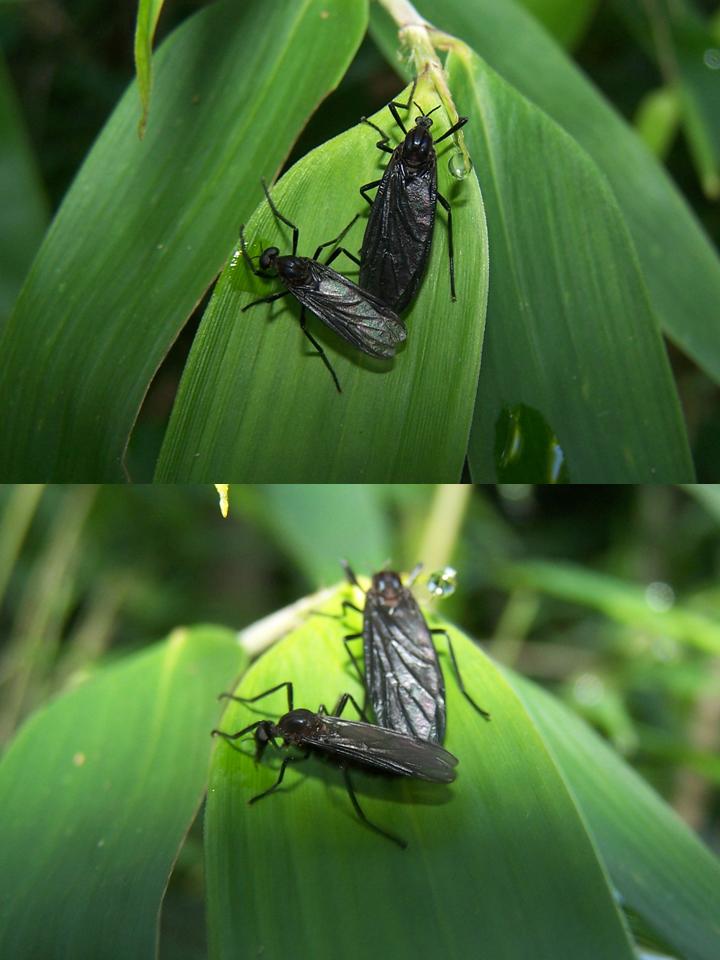

We are very grateful to Dr Sergio Ibaņez-Bernal for the identification of the images
Designed by Paul Smith 2006. This website is copyrighted by law.
Material contained herewith may not be used without the prior written permission of FAUNA Paraguay.
Photographs on this page were taken by Paul Smith and are used with their permission.
 | FIGURE 1 |
|
FIGURE 1 - Unidentified sp. in copulus - PROCOSARA, PN San Rafael (Paul Smith November 2007).
BIBIONIDAE - MARCH FLIES
A distinctly randy group of flies that are almost always encountered in copulus, a practive that has earned them the nickname "Lovebugs". The race to mate is a result of the unusual life cycle of these flies in which the adult stage is short, existing only for the purpose of reproduction. In order to maximise reproductive potential adult emergence is highly synchronised and these flies may briefly become extremely abundant before disappearing again - the root of the northern hemisphere common name "March Flies". Some adults in fact do not eat as adults and subsist entirely on what they consumed as larvae. Larvae are typically herbivorous, eating dead vegetation or plant roots. Though some adults are considered important pollinators, larvae may be pests n some areas. Oddly for Dipterans there exists a healthy fossil record for Bibionids, with fossils dating at least back to the Upper Cretaceous and maybe even to the Jurassic.
Click on the images to enlarge them.

